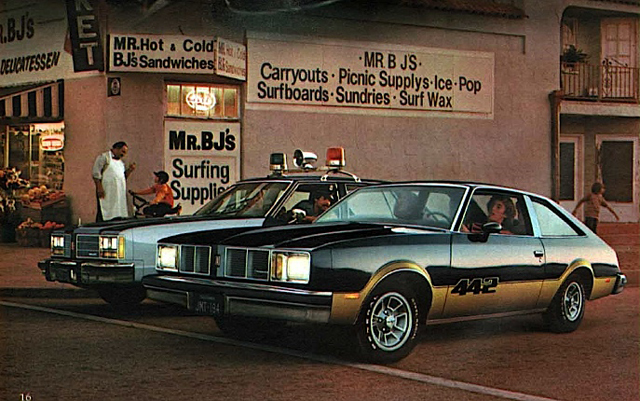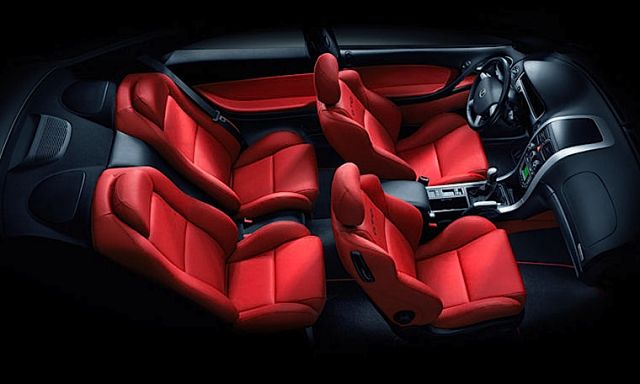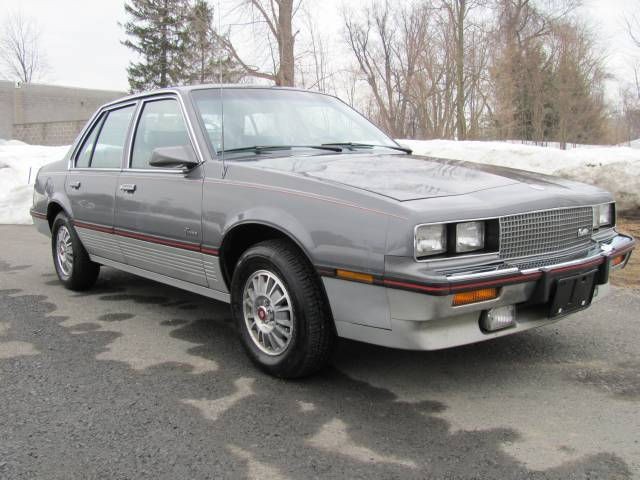Automotive critics typically pander about how retched American cars are and how they like to fall apart. Stuck in a time warp from the late-’70s and ’80s, they spitefully share their disdain for not only the American automobile, but the American autoworker. Take it from somebody that experienced a GM assembly line firsthand, I’m here to tell you that the urban legends of union workers sleeping and playing board games while on the job are simply not true.
It wasn’t the fault of the autoworker so much as it was the bean counters and engineers behind these “ideas.”
However over the course of automotive history, American auto manufacturers have given us the occasional blunder from time to time. The 1970’s were notorious for this. During the oil crisis, Chrysler put Road Runner decals on the Plymouth Volare, GM built 6-cylinder 442’s, and Ford tried convincing buyers that a Pinto was a Mustang.
These were dark days indeed, and many of us have forgotten how difficult these times were. It was the era of horrific badge engineering, poor quality, and fuel shortages. It wasn’t the fault of the autoworker so much as it was the bean counters and engineers behind these “ideas.” Eventually we found our way through it, and in that old American tradition we’ve endured.
Not Just an American Problem

A once proud and noble musclecar with high compression and ram air, the 442 had become a shadow of it's former self by 1978. A 105hp V6 Buick engine was standard fair, while potential buyers could upgrade to a 110hp 260 ci. V8, or choose from two Chevy 305's. The highest rated of the latter had a 4-bbl. carburetor and 165hp.
Throughout the ’80s, GM, Ford, and Chrysler in particular tried to convince the buying public that swapping out the front grille and nameplate was all that was needed to give a car its own identity. For furhter proof look at the Dodge Aries and Plymouth Reliant on Chrysler’s behalf. Obviously that didn’t pan out, and in one of the worst cases ever was GM’s attempt to build a small, practical Cadillac from a Cavalier of all things.
The Cimarron is the car that almost killed the Cadillac brand, and it took nerves of steel for Caddy to try again in the late-nineties with the Catera – which was almost equally as terrible. Chevy and GMC, same story. The only vehicles that gave GMC any sort of identity of it’s own was the Syclone and Typhoon.
Unfortunately, badge engineering never completely disappeared from vehicle design, and has continued on over the last few decades. Today it’s not as bad as it was in the ’70s and ’80s, though it still exists on some levels. Take Japanese automakers Toyota, Honda, and Nissan, for instance. During the 1980’s, they each introduced “luxury marques” to the American buying public for a number of reasons.
The first was to cash in on the immense popularity of Japanese cars. The second was the ability to fool Americans into believing that they were buying superior products over anything that America or Europe had to offer, and the third was to use this marketing scheme as a loophole to get around Ronald Reagan’s 100% tariff on import cars.
All three of these Japanese companies (particularly Toyota and Honda) simply rebadged their existing Japan-exclusive models and sold them here at a premium. It obviously worked in hindsight, and today some people still believe that Lexus is either a European or an American company.
The Neo GTO

When the new GTO was released, it featured very subtle styling and a 350hp LS1 -perfect canvas to improve upon.
However I will point out that there is a difference from simple badge engineering, and reengineering a car to fit a gap in a product lineup. One example that sticks out in my mind is the final generation Pontiac GTO that was built during the 2004-2006 model years. After the Firebird was killed in 2002 Pontiac was left without a performance car, and then-new GM Chairman Bob Lutz wasn’t having any of it.
Being short on time, funds, and having literally no platform to speak of to base an all-new car on, he sought out the help from GM’s Australian division. The car in question would be their Holden Monaro, and it would become the basis of a neo-GTO.
It offered the enthusiast a handsome, two-door sport coupe body, rear wheel drive, excellent build quality, and GM’s venerable 350hp LS1 powerhouse (remember, back in ’04 350 HP was still considered a lot of power). According to inside reports, the GTO received well over 100 changes to its design to make it more appealing to American enthusiasts. This included the switch to left hand drive, relocating the fuel tank, a power increase, 3.46 gears for all cars (automatic Monaros have 3.08’s), obvious cosmetic tweaks, and an exhaust system that mimics the sound of the 1964 original’s to the decibel.

The interior was something to behold in the GTO. American cars typical of the times were overdone in one shade of plastic, while the GTO gave us multi-colored door inserts, gauges, and seating
Unfortunately due to it’s subtle aesthetics, the Pontiac wasn’t well accepted by critics in the automotive press or the traditionalists looking for a car that resembled the one they drove in the ’60s. But underneath is what counted, and for those who could see passed its “Grand Prix looks” knew what kind of potential the car really had.
Despite it’s unsuccessful sales numbers, the GTO continued to evolve over the succeeding two model years with the introduction of the 400hp LS2, 18-inch wheels, PBR brakes, an updated hood and rear bumper cover. They even offered a complete sport appearance package in an attempt to win over the few picky skeptics. It came at a hefty price, and was a rare option as a result.
It wasn’t enough, and in 2006 the GTO would die for good, as would the Pontiac brand a few years later in the wake of the economic collapse. But it wasn’t a total loss, as it would introduce GM loyalists to new levels of refinement that was never seen up to that point. Plus, the GTO would be equipped with independent rear suspension, and at the time, no GM car other than the Corvette offered such an arrangement.
The 2005 GTO (pictured here) brought several changes over the innaugural GTO's original format. This included a new hood, brakes, rear bumper fascia, optional 18-inch wheels, and a 400hp LS2.
The GTO’s Legacy
The Monaro-turned-GTO would up the ante for all GM cars in America, ultimately paving the way for machines like the Pontiac G8, Caprice PPV, the upcoming Chevy SS and indirectly, the 5th-generation Camaro.
Seven years after the GTO went out of production, it’s still a favorite among those looking for a late-model car with massive potential. The aftermarket caters to the Aussie-born machines like they’re never going out of style, and they have fallen to levels of affordability that reaches even the most cash-strapped enthusiast.
There simply isn’t a reason not to entertain the purchase of a secondhand GTO, and for all of you skeptics out there who still haven’t driven one, you should. Reengineering, not badge engineering can be a beautiful thing. Besides, despite it’s Australian roots, it’s still more American than a Lexus.

The late-model GTO would ultimately pave the way for cars like this Camaro ZL1 in regards to build quality, IRS, and incredible handling.






















